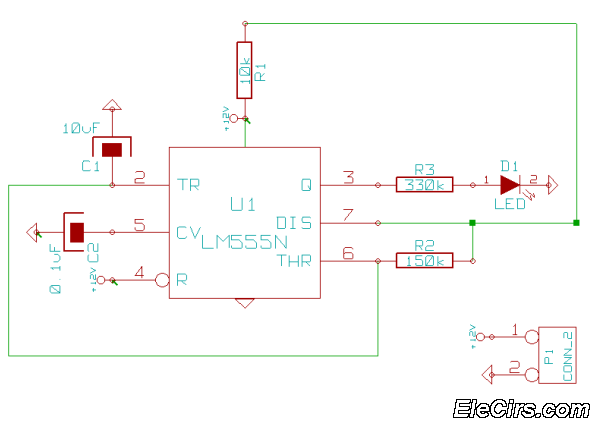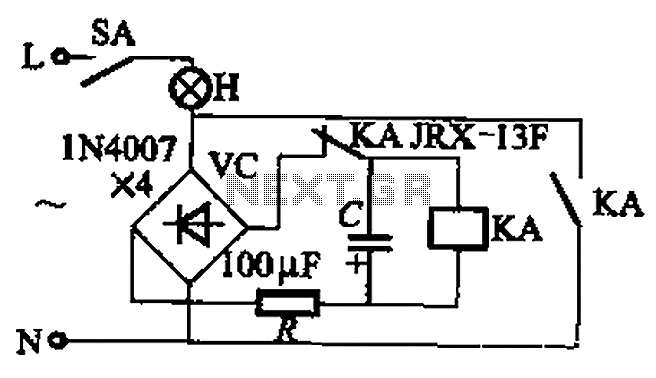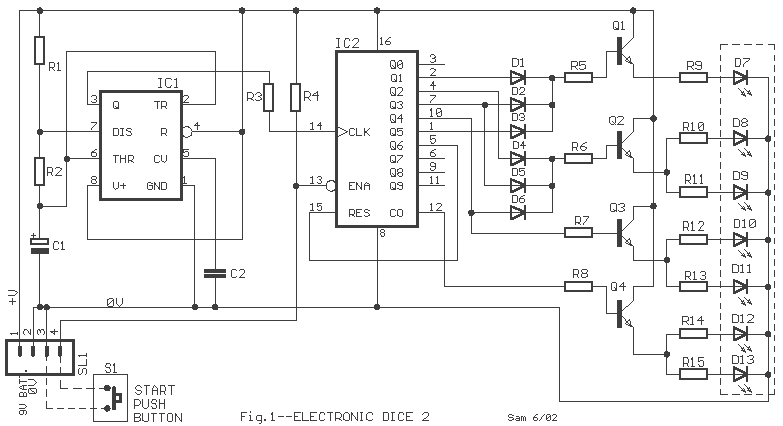
Musical Doorbell Circuit

This circuit is a musical doorbell. When the button S1 is pressed, a short melody plays. If the button is pressed multiple times in quick succession or held down, a different melody is generated, and the melody plays for a longer duration. The operation of the circuit is as follows: when button S1 is activated, the inputs of U3 and one input of U1 switch to logic 0. The data input (pin 7 of IC 4015) becomes logic 1. The 4015 is a static 4-bit shift register. Each clock pulse from U4 shifts this logic 1 further along the register. The clock frequency is approximately 5 Hz. The number of shifts of logic 1 is directly related to the duration for which switch S1 is closed. Once at least one of the shift register outputs is logic 1, current flows to the base of T1 through a corresponding resistor. The transistor T1 acts as a current-controlled oscillator, with the tone pitch determined by the logic states of the various flip-flop outputs of the shift register. Each clock pulse shifts the logic 1 in the register, and one output of the register (pin 2) is fed back to U2 and U3, ensuring that the logic 1 in the register continues to loop.
The musical doorbell circuit utilizes a combination of digital and analog components to create an interactive sound output based on user input. The core of the circuit is the 4015 static 4-bit shift register, which holds binary data that represents different melodies. The user interaction begins with the pressing of switch S1, which serves as the input trigger for the system. This switch closure alters the logic levels at the inputs of U3 and U1, initiating the melody playback sequence.
The clock generation is handled by U4, which provides a consistent timing pulse at approximately 5 Hz. This frequency determines how quickly the shift register advances its stored data. The duration for which the switch S1 is pressed directly influences the number of shifts that occur within the register, hence affecting the length of the melody played.
As the logic 1 is shifted through the register, it activates the base of transistor T1, which functions as a current-controlled oscillator. The oscillation frequency, and thereby the pitch of the tones produced, varies based on the specific outputs of the shift register that are active at any given moment. The feedback loop from pin 2 of the shift register back to U2 and U3 ensures that the circuit continuously cycles through the stored melodies, providing a dynamic and engaging auditory experience.
This design effectively combines digital logic with analog control to create a versatile musical doorbell that responds to user interaction in a meaningful way. The result is a circuit that not only serves its primary function as a doorbell but also adds an element of playful interaction through its musical capabilities.This featured circuit is a musical doorbell. After the button S1 is pressed, a short melody is played. When the button is pressed many times in rapid succession or pressed longer, a different melody is generated and the melody plays longer. The circuit works this way: when the button S1 is activated the inputs of U3 and one input of U1 switches to logic 0 ³.
The data input (pin 7 of IC 4015) becomes logic 1 ³. The 4015 is a static 4-bit shift register. Each clock impulse coming from U4 shifts this logic 1 ³ further in the register. The clock frequency is around 5 Hz. The number of shifted logic 1 ³ is directly dependent on the length of time the switch S1 is closed. Once at least one shift register is logic 1 ³, a current flows to the base of T1 through a corresponding resistor. The transistor T1 functions as a current controlled oscillator. The tone pitch is dependent on the logic state of the different flip-flop outputs of the shift register.
Each clock pulse shifts the logic 1 ³ in the register. One output of the register (pin 2) is coupled back to U2 and U3 so that all the logic 1 ³ in the register always run in a loop. 🔗 External reference
The musical doorbell circuit utilizes a combination of digital and analog components to create an interactive sound output based on user input. The core of the circuit is the 4015 static 4-bit shift register, which holds binary data that represents different melodies. The user interaction begins with the pressing of switch S1, which serves as the input trigger for the system. This switch closure alters the logic levels at the inputs of U3 and U1, initiating the melody playback sequence.
The clock generation is handled by U4, which provides a consistent timing pulse at approximately 5 Hz. This frequency determines how quickly the shift register advances its stored data. The duration for which the switch S1 is pressed directly influences the number of shifts that occur within the register, hence affecting the length of the melody played.
As the logic 1 is shifted through the register, it activates the base of transistor T1, which functions as a current-controlled oscillator. The oscillation frequency, and thereby the pitch of the tones produced, varies based on the specific outputs of the shift register that are active at any given moment. The feedback loop from pin 2 of the shift register back to U2 and U3 ensures that the circuit continuously cycles through the stored melodies, providing a dynamic and engaging auditory experience.
This design effectively combines digital logic with analog control to create a versatile musical doorbell that responds to user interaction in a meaningful way. The result is a circuit that not only serves its primary function as a doorbell but also adds an element of playful interaction through its musical capabilities.This featured circuit is a musical doorbell. After the button S1 is pressed, a short melody is played. When the button is pressed many times in rapid succession or pressed longer, a different melody is generated and the melody plays longer. The circuit works this way: when the button S1 is activated the inputs of U3 and one input of U1 switches to logic 0 ³.
The data input (pin 7 of IC 4015) becomes logic 1 ³. The 4015 is a static 4-bit shift register. Each clock impulse coming from U4 shifts this logic 1 ³ further in the register. The clock frequency is around 5 Hz. The number of shifted logic 1 ³ is directly dependent on the length of time the switch S1 is closed. Once at least one shift register is logic 1 ³, a current flows to the base of T1 through a corresponding resistor. The transistor T1 functions as a current controlled oscillator. The tone pitch is dependent on the logic state of the different flip-flop outputs of the shift register.
Each clock pulse shifts the logic 1 ³ in the register. One output of the register (pin 2) is coupled back to U2 and U3 so that all the logic 1 ³ in the register always run in a loop. 🔗 External reference





